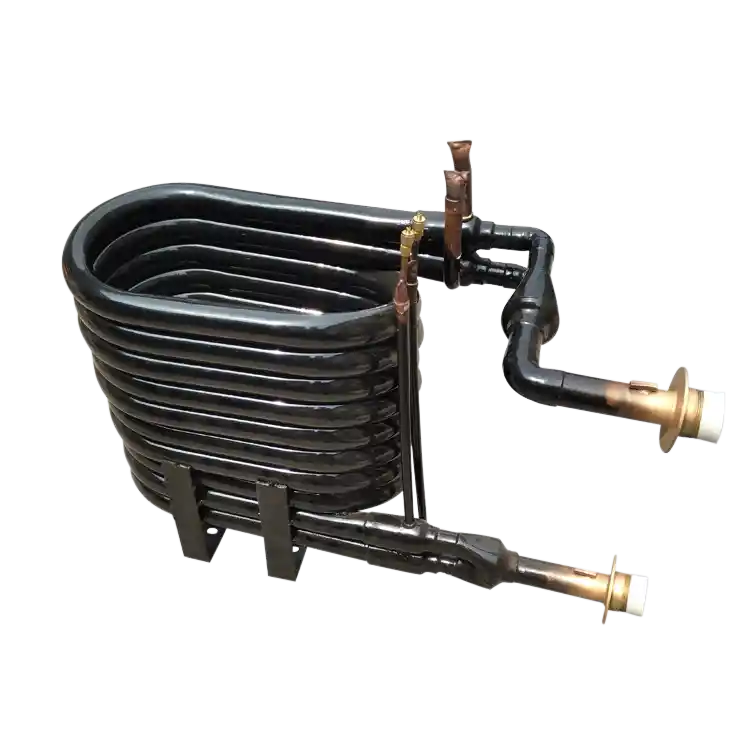1. Introduction
In the production process of coaxial heat exchangers, pressure leak detection and repair are critical quality control steps to ensure the integrity and reliability of the heat exchanger. This article focuses on the importance of pressure leak detection, methods for detecting leaks, repair techniques, and the significance of maintaining leak-free operation in coaxial heat exchangers.
2. Importance of Pressure Leak Detection
Pressure leak detection is essential for the following reasons:
2.1 Performance and Efficiency
Leaks in a coaxial heat exchanger can result in a loss of pressure and reduced efficiency. Detecting and repairing leaks ensures optimal performance and efficient heat transfer.
2.2 Energy Conservation
Leak-free operation prevents energy losses by maintaining the desired pressure levels and minimizing the need for additional energy input.
2.3 System Reliability
Leaks can lead to system failures and downtime. Detecting and repairing leaks before the heat exchanger is put into service ensures system reliability and avoids costly repairs or replacements.
3. Methods of Leak Detection
Several methods can be employed to detect leaks in coaxial heat exchangers:
3.1 Visual Inspection
Visual inspection is a fundamental method for detecting leaks. Trained personnel examine the heat exchanger for any visible signs of leakage, such as moisture, stains, or corrosion.
3.2 Pressure Decay Testing
Pressure decay testing involves pressurizing the heat exchanger system and monitoring the pressure drop over a specified period. A significant pressure drop indicates the presence of a leak.
3.3 Bubble Testing
Bubble testing is a common technique that involves applying a soapy solution to the heat exchanger surface while it is under pressure. If there is a leak, bubbles will form at the site of the leak.
3.4 Dye Penetrant Testing
Dye penetrant testing is a more sensitive method used to detect small leaks. A colored dye is applied to the heat exchanger surface, and if there is a leak, the dye seeps into the crack or hole, making it visible under ultraviolet light.
3.5 Ultrasonic Testing
Ultrasonic testing uses high-frequency sound waves to detect leaks in the heat exchanger. It can identify leaks by measuring the changes in sound reflection caused by the presence of a leak.
4. Repair Techniques
Once a leak is detected, appropriate repair techniques can be employed based on the nature and severity of the leak. Common repair methods include:
4.1 Welding or Brazing
For larger leaks or damaged components, welding or brazing can be used to repair the affected area. This involves fusing the metal parts together to restore their integrity.
4.2 Sealants and Adhesives
Sealants and adhesives are suitable for sealing smaller leaks or gaps. They create a durable and watertight seal, preventing further leakage.
4.3 Component Replacement
In cases where the leak is due to irreparable damage or corrosion, replacing the affected component may be necessary. This ensures a reliable and long-lasting repair.
5. Maintenance for Leak-Free Operation
To maintain leak-free operation in coaxial heat exchangers, regular maintenance is essential. This includes:
5.1 Periodic Inspections
Routine inspections should be conducted to identify any potential leaks or signs of damage. Visual inspections and non-destructive testing methods can be employed for comprehensive evaluation.
5.2 Preventive Maintenance
Implementing a preventive maintenance program helps identify and address potential issues before they lead to leaks. This may include cleaning, tightening connections, and verifying the integrity of seals and gaskets.
5.3 Operational Monitoring
Monitoring the operational parameters of the heat exchanger, such as pressure, temperature, and flow rates, can help identify any abnormalities that may indicate the presence of leaks.
6. Conclusion
Pressure leak detection and repair are vital aspects of quality control in the production of coaxial heat exchangers. By employing effective leak detection methods and appropriate repair techniques, manufacturers can ensure the integrity, reliability, and optimal performance of the heat exchangers. Regular maintenance and preventive measures further contribute to the long-term leak-free operation of the heat exchanger system, reducing energy losses, and minimizing downtime.


